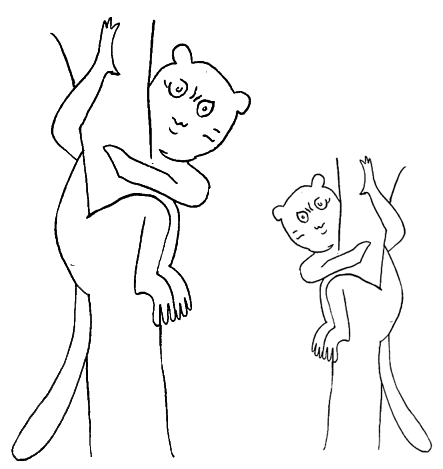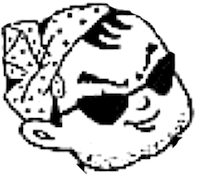
ファッションとしてのキャンプ
Camp as Fashion

髪をペロペロにして、絵に描いたような帽子と羽のボアを身につけ、マレーネ・ディートリッヒ のふりをするような小生を指すと思った?そう、クィア界ではそれをキャンプと呼ぶんだ。ハイ・キャンプは、例えばバレエや、バロック芸術の感情的な基礎と なるものだ。真剣に取り組んでいないものに対してキャンプはできない。馬鹿にしているのではなく、馬鹿にされているのである。自分にとって基本的に真剣な ものを、面白さや芸術性、エレガンスという観点から表現しているのだ。バロック芸術は、基本的に宗教についてのキャンプである。バレエは愛についてのキャ ンプなのだ......--Christopher Isherwood, The World in the Evening (1954)
| Notes on "Camp" is
an essay by Susan Sontag.[1] It was first published as an essay in
1964, and was her first contribution to the Partisan Review.[2] The
essay attracted interest in Sontag. It was republished in 1966 in
Sontag's debut collection of essays, Against Interpretation.[3] The
essay considers meanings and connotations of the word "camp".[4] The
2019 haute couture art exhibit Camp: Notes on Fashion, presented by the
Anna Wintour Costume Center at New York City's Metropolitan Museum of
Art, was built around Sontag's essay by Andrew Bolton, the Wendy Yu
Curator in Charge of the Costume Institute.[5] |
『「キャンプ」についてのノート』は、スーザン・ソンタグによるエッセ
イである[1]。1964年にエッセイとして初めて出版され、『パルチザン・レビュー』に初めて寄稿したものである[2]。1966年、ソンタグのデ
ビューエッセイ集『Against Interpretation』に再掲載された[3]
このエッセイは「キャンプ」という言葉の意味と含意を考察している[4] 2019年のオートクチュール芸術展「Camp:
ニューヨークのメトロポリタン美術館のアナ・ウィンター・コスチューム・センターが開催した「Notes on
Fashion」は、コスチューム・インスティチュートのウェンディ・ユー・キュレーター担当のアンドリュー・ボルトンによってソンタグのエッセイを中心
に構成されている[5]。 |
| Christopher Isherwood is
mentioned in Sontag's essay: "Apart from a lazy two-page sketch in
Christopher Isherwood's novel The World in the Evening (1954), [camp]
has hardly broken into print."[6] In Isherwood's novel two characters
are discussing the meaning of camp, both High and Low. Stephen Monk,
the protagonist, says: You thought it meant a swishy little boy with peroxided hair, dressed in a picture hat and a feather boa, pretending to be Marlene Dietrich? Yes, in queer circles they call that camping. … You can call [it] Low Camp…High Camp is the whole emotional basis for ballet, for example, and of course of baroque art … High Camp always has an underlying seriousness. You can't camp about something you don't take seriously. You're not making fun of it, you're making fun out of it. You're expressing what’s basically serious to you in terms of fun and artifice and elegance. Baroque art is basically camp about religion. The ballet is camp about love …[7] Then examples are given: Mozart, El Greco and Dostoevsky are camp; Beethoven, Flaubert and Rembrandt are not.[8] |
ソンタグのエッセイの中でクリストファー・イシャーウッドが言及されて
いる。クリストファー・イシャーウッドの小説『夕方の世界』(1954年)にある2ページのいい加減なスケッチを除けば、(キャンプは)ほとんど活字に
なっていない」[6]
イシャーウッドの小説では、2人の人物がキャンプの意味について、ハイとローの両方で議論している。主人公のスティーブン・モンクは言う 「あなたはそれを、オキシフルで脱色した髪をして、絵に描いたような帽子と羽のボア を身につけ、マレーネ・ディートリッヒのふりをするような小生を指すと思った?そう、クィア界ではそれをキャンプと呼ぶんだ。ハイ・キャンプは、例えばバ レエや、バロック芸術の感情的な基礎となるものだ。真剣に取り組んでいないものに対してキャンプはできない。馬鹿にしているのではなく、馬鹿にされている のである。自分にとって基本的に真剣なものを、面白さや芸術性、エレガンスという観点から表現しているのだ。バロック芸術は、基本的に宗教についてのキャ ンプである。バレエは愛についてのキャンプなのだ.....」[7]。-Christopher Isherwood, The World in the Evening (1954) モーツァルト、エル・グレコ、ドストエフスキーはキャンプであり、ベートーベン、フラウベール、レンブラントはそうではないのです[8]。 |
| Kitsch Gay culture Low culture Cinephilia High culture |
キッチュ ゲイカルチャー ローカルチャー シネフィリア ハイカルチャー |
| https://en.wikipedia.org/wiki/Notes_on_%22Camp%22 |
https://www.deepl.com/ja/translator |
反解釈、
様式について、
模範的苦悩者としての芸術家、
シモーヌ・ヴェーユ、
カミュの『ノートブック』、
ミシェル・レリスの『成熟の年齢』、
英雄としての文化人類学者、
ジェルジ・ルカーチの文学論、
サルトルの『聖ジュネ』、
ナタリー・サロートと小説〔ほか〕
+++
Links
リンク
文献
その他の情報


Copyleft, CC, Mitzub'ixi Quq Chi'j, 1996-2099
☆
 ☆
☆